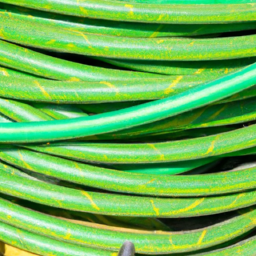Garden Hose What Thread
What Thread Is A Garden Hose
Exploring the Morphology of a Garden Hose
Have you ever wondered what thread a garden hose is made of? A closer look at everyday objects sometimes reveals unexpected surprises, and the implementation of a garden hose serves as no exception. With the rise of DIY and home-improvement projects, the appreciation of garden hoses has increased. Let us further explore the various elements that determine their construction.
Types of Garden Hose
The most commonly seen garden hoses are made of polyvinyl chloride (PVC). However, hoses can also come in polyurethane (PU) and latex variations. The choice of material depends mostly on price, durability and flexibility. For instance, PU hoses are the most likely to resist abrasion and tearing, but they cost more than their PVC cousins. Latex hoses are light weighted and more flexible, but not as durable or weather-resistant.
Types of Fittings and Couplings
The threading of garden hoses varies depending on their end fittings. Usually, they come in two major styles: National Pipe Thread (NPT) or Garden Hose Thread (GHT). The NPT utilizes an American Standard thread, while GHT uses a non-standard metric thread. Each thread type requires its own type of connector, but the measurements needed to produce a proper seal is often the same.
Garden Hose Threads (GHT)
Standard garden hoses feature a thread pitch of 11.5 threads per inch on a 3/4" diameter male and a 14 threads per inch on a 5/8" female. Measurements between the thread and the rubber seals are equal for both the male and female connector, with the female one being slightly thicker. The diameter of the thread itself is identical to the outer diameter of the hose.
National Pipe Thread (NPT)
NPT thread pitches measure 27 threads per inch on a 1/2" diameter male and 11.5 threads per inch on a 3/4" female. While the measurements between the thread and the seal are equal for the male connectors, the measurement of the thread and the seal of the female connector differ slightly. The female connector's thread has a 0.04" larger diameter when compared to the outer diameter of the hose itself.
External Protection
An important protective feature of the garden hose is its outer layer. This is what comes into contact with the elements, and it is typically composed of a material that can withstand ultraviolet radiation, temperatures, and corrosion. Commonly used material for this layer is nitrile and chlorprene, but there are also garden hoses lined with PVC or EVA. When selecting a garden hose, it is recommended to consider the outer layer and make sure it is resistant to the elements it will be exposed to.
Insights
A closer examination of a garden hose brings to light an intricate design and thread system that make it a useful tool for gardeners and DIY-ers. Understanding the types of materials used and the thread sizes is essential when it comes to purchase and proper installation. With these pieces of information in the back pocket, anyone looking to purchase a garden hose can have peace of mind knowing they made the right decision.

Previous Page
Next Page